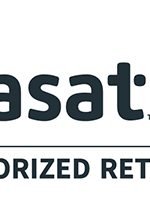In our modern digital age, where a vast sea of information is just a click away, the importance of internet connectivity is beyond dispute. It has reshaped how we communicate, learn, work, and even play. Yet, the digital landscape is starkly different between urban and rural communities, creating a widening chasm known as the digital divide.
The Digital Divide
The term “digital divide” refers to the disparity in access to information and communication technology, most notably, the internet. It’s a yawning gap that has far-reaching consequences, putting those on the wrong side at a significant disadvantage.
Regrettably, the scope of the problem is vast. According to recent data, an estimated 25% of rural households in the United States lack access to dependable broadband internet, compared to just 2% in urban areas. That’s a significant discrepancy, highlighting the urgent need to address this digital inequity.
Challenges to Implementing Internet in Rural Areas
Bringing the internet to rural areas isn’t just a matter of flicking a switch. Numerous hurdles exist, from the geographical constraints of remote and hard-to-reach locations to the prohibitive costs of infrastructure development.
Technologically, rural regions often lack the fiber optic cables necessary for high-speed broadband. DSL or cable’s limited reach further exacerbates the problem.
These constraints have tangible social and economic effects. Limited internet access restricts educational opportunities, impedes access to healthcare, and hampers the growth of small businesses.
Case Study
Take, for example, the rural community of Oak Valley, Tennessee. Despite its proximity to the technology hubs of Nashville and Chattanooga, Oak Valley struggled with painfully slow dial-up connections and unreliable satellite internet. This digital handicap hindered their ability to attract new businesses, while local residents struggled to access essential services online. Efforts to improve connectivity, such as installing DSL lines, were costly and only provided a partial solution.
Possible Solutions
So how can we bridge this digital divide? A combination of government policies, private sector initiatives, community-based solutions, and technological innovations might hold the answer.
Government initiatives like the Federal Communications Commission’s Rural Digital Opportunity Fund in the U.S. have shown promise, offering financial incentives for companies to expand internet access in underserved areas. Meanwhile, private sector companies like Viasat, based in Carlsbad, California, are making significant strides in improving satellite internet technology.
Technological solutions also offer hope. Expanding fiber optic networks into rural areas, advancements in satellite internet technology, and introducing new technologies like 5G and Low Earth Orbit (LEO) satellites could revolutionize rural connectivity.
Conclusion
In conclusion, implementing internet in rural areas is a multifaceted challenge with profound social and economic implications. As we forge ahead in this digital age, it’s imperative that we ensure everyone has access to the opportunities and services the internet provides. It’s not just a matter of equity; it’s about enabling all communities to participate fully in our increasingly digital world.
Why not consider satellite internet as a part of the solution? Viasat is leading the charge in providing reliable, high-speed connectivity in places where traditional internet services are scarce or nonexistent. Together, we can bridge the digital divide and ensure no community is left offline.



Add a Comment